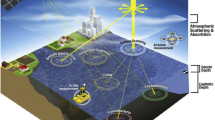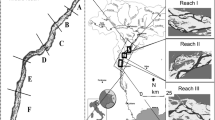Abstract
According With the development of space remote sensing technology, the emergence of various multi-temporal, multi-spectral, hyperspectral, high-resolution remote sensing image technologies and corresponding products makes the information of the earth’s surface resources and topography more quickly and effectively presented, which not only provides a lot of information, but also provides abundant information for accurate and scientific geological prediction. Compared with the middle and low-resolution remote sensing image, the high-resolution target image has clearer contour and richer spatial details. For a long time, the monitoring and analysis of river course changes and environmental evolution in river basins has been lacking effective automatic and intelligent analysis tools to solve large spatial and time-span problems. By combining with high resolution satellite remote sensing technology, making full use of the spatial and temporal advantages of high resolution satellite remote sensing image information, automatic identification and analysis of the evolution of river course and surrounding environment in the basin, timely discovery of existing problems and analysis of the effect of river course management can effectively support the scientific research and decision-making support for River Basin management. It provides a new idea for the wide application of water resources industry in river basin monitoring and control. In this paper, the development of satellite remote sensing system, high resolution satellite remote sensing image analysis, main analysis methods and related application results are introduced. The application and Prospect of satellite remote sensing technology in river monitoring and harnessing are briefly described.
Access this chapter
Tax calculation will be finalised at checkout
Purchases are for personal use only
Similar content being viewed by others
References
Niu C, Jiang W, Huang X et al (2007) Analysis and comparison between two object-oriented information extraction software of feature analyst and eCognition. Remote Sens Inf (02):66–70+105
Chen Q (2007) Research and realization of multi-sources remote sensing data on object oriented. China University of Geosciences
Wu Z (2003) RBFNN representation based on rough sets and its application to remote sensing image classification. Acta Geodaetica Et Cartographic Sin 32(1):53–57
Xu L, Li C, Yang M (2005) Application of support vector machines and fuzzy method for remote sensing image classification. Comput Eng Appl 41(36):79–82
Wang Y (1999) A classification of remote sensing image using wavelet neural network. J Image Graph 4(5):368–371
Cao X, Ke C (2006) Classification of high-resolution remote sensing images using object-oriented method. Remote Sens Inf (5):27–30, 51
Chen Q, Luo J et al (2004) Remote sensing image classification method based on multi-features. J Remote Sens 8(3):12–15
Liu M (2007) Relief automated generalization based on the improved three dimensional Douglas-Peucker algorithm: a case study in the Loess Plateau. Northwest University
Tong Q, Zhang B, Zheng L (2006) Hyperspectral remote sensing - principles, techniques and applications. Higher Education Press, Beijing
Liu M, Hu W, Lu G (2019) Water resources information monitoring and water conservancy information. China Water & Power Press, Beijing
Guan Y, Cheng X (2008) High Resolution Satellite Image Processing Guide. Science Press, Beijing
Author information
Authors and Affiliations
Corresponding author
Editor information
Editors and Affiliations
Rights and permissions
Copyright information
© 2020 Springer Nature Singapore Pte Ltd.
About this paper
Cite this paper
Wang, L., Chen, S., Nie, X., Liu, S. (2020). Application of Satellite Remote Sensing Technology in River Monitoring and Governance. In: Gourbesville, P., Caignaert, G. (eds) Advances in Hydroinformatics. Springer Water. Springer, Singapore. https://doi.org/10.1007/978-981-15-5436-0_48
Download citation
DOI: https://doi.org/10.1007/978-981-15-5436-0_48
Published:
Publisher Name: Springer, Singapore
Print ISBN: 978-981-15-5435-3
Online ISBN: 978-981-15-5436-0
eBook Packages: Mathematics and StatisticsMathematics and Statistics (R0)




